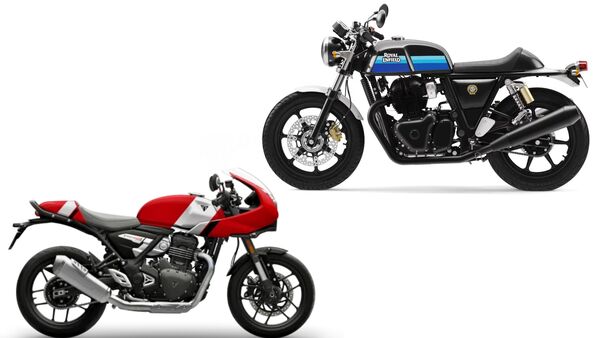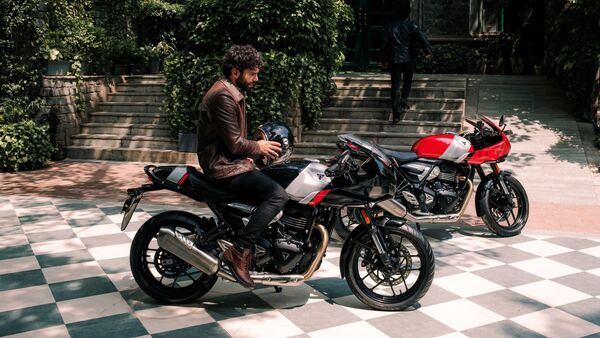- The Triumph Thruxton 400, priced at ₹2.74 lakh, targets budget-conscious riders seeking modern tech. In contrast, the Royal Enfield Continental GT 650, starting at ₹3.25 lakh, appeals to those valuing classic design and a relaxed ride, despite its higher cost and weight.

View Personalised Offers on
The café racer segment has always been about style, attitude, and a pure connection between rider and machine. Buying a cafe racer is a decision that is made through the heart and not through the mind. In India, two motorcycles are currently sparking serious conversations among enthusiasts — the brand-new Triumph Thruxton 400 and the ever-popular Royal Enfield Continental GT 650. While they share the same retro-inspired philosophy, their approach to performance, features, and value is quite different.
Engines: Single vs Twin
Under the Thruxton’s sculpted tank lies a 398 cc liquid-cooled, single-cylinder motor that churns out 42 hp at 9,000 rpm and 37.5 Nm at 7,500 rpm, paired with a 6-speed gearbox.
The Continental GT 650, meanwhile, relies on its 648 cc parallel-twin, producing 47 hp at 7,250 rpm and a generous 52 Nm at 5,650 rpm. It also gets a 6-speed gearbox.
On paper, the GT 650 makes more power and torque, but the Thruxton’s lighter frame which will make it feel more agile while cornering.
Triumph Thruxton 400 vs Royal Enfield Continental GT 650: Weight and Size
The Thruxton tips the scales at 183 kg, a full 31 kg lighter than the Continental GT’s 214 kg kerb weight. Both bikes offer a near-identical seat height — 795 mm for the Triumph and 793 mm for the Enfield — which should be manageable for most riders.
The GT’s 174 mm ground clearance and 12.5-litre tank contrast with the Thruxton’s 158 mm clearance and slightly bigger 13-litre fuel capacity.

Triumph Thruxton 400 vs Royal Enfield Continental GT 650: Chassis, Suspension & Brakes
Triumph has given the Thruxton a sport-focused setup with USD forks up front and a rear monoshock, complemented by 17-inch wheels wrapped in 110/70 (front) and 150/60 (rear) tyres.
Royal Enfield has stayed true to tradition with telescopic forks, twin rear shocks, and larger 18-inch wheels running 100/90 (front) and 130/70 (rear) tyres.
When it comes to braking hardware, the Continental GT gets slightly larger discs — 320 mm at the front and 240 mm at the rear — compared to the Thruxton’s 300 mm and 230 mm setup. Still, the Triumph’s lighter weight could even the stopping-power equation.
Also Read : Royal Enfield Himalayan 750 and Himalayan Electric teased for the first time
Triumph Thruxton 400 vs Royal Enfield Continental GT 650: Features & Technology
The Thruxton brings modern touches to the retro scene, including all-LED lighting, ride-by-wire throttle, traction control, USB…
Disclaimer
We strive to uphold the highest ethical standards in all of our reporting and coverage. We 5guruayurveda.com want to be transparent with our readers about any potential conflicts of interest that may arise in our work. It’s possible that some of the investors we feature may have connections to other businesses, including competitors or companies we write about. However, we want to assure our readers that this will not have any impact on the integrity or impartiality of our reporting. We are committed to delivering accurate, unbiased news and information to our audience, and we will continue to uphold our ethics and principles in all of our work. Thank you for your trust and support.
Website Upgradation is going on. For any glitch kindly connect at 5guruayurveda.com


